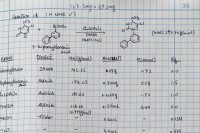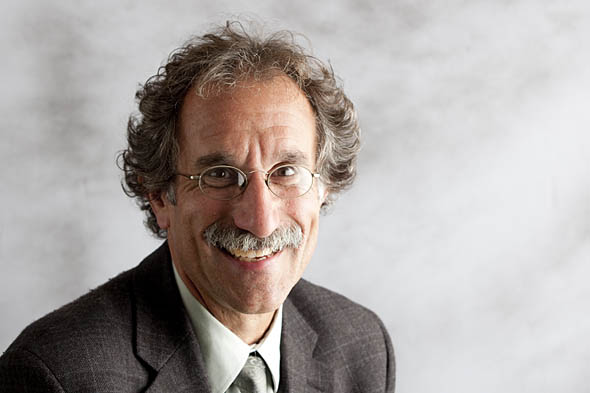
Wenzel leads $600,000, NSF-funded effort to develop online chemistry curriculum
A newly awarded $600,000 National Science Foundation grant is supporting an innovative national effort led by a Bates College professor to create an in-depth, online chemistry curriculum.
Thomas Wenzel, Charles A. Dana Professor of Chemistry at Bates, is the principal investigator of the four-year initiative, titled “Development of E-Learning Modules for Analytical Chemistry.” Faculty from a total of 25 schools are involved in the project.
The group will develop an entire analytical chemistry curriculum for publication on an NSF-funded, open-access Web resource called the Analytical Sciences Digital Library.
Intended for undergraduates, the materials will be adaptable for diverse students at a broad variety of institutions, from small liberal arts schools like Bates to large public universities — where, as Wenzel put it, “they might teach more students in analytical chemistry in one year than I’ve taught in my 30 years at Bates.”
See the NSF record for “Development of E-Learning Modules for Analytical Chemistry“
Demographic diversity is part of the design. Because African Americans and Hispanics are underrepresented in the sciences, faculty from historically black and Hispanic schools are taking part in the project to help ensure that the curriculum is as widely relevant as possible.
“It’s a really significant and unique aspect of this project,” says Wenzel, “that we have all these different kinds of schools involved.”
Rather than presenting a sterile catalog of chemical topics and activities with no context, the curriculum modules are inquiry-based — that is, designed as specific complex problems that reflect real-world situations.
For instance, Wenzel explains, one finished module looks at Lake Nakuru, a lake in Kenya known for supporting huge flocks of flamingos. “They are dying at unusually high rates,” Wenzel says. “So the problem is presented as, ‘Why are they dying?’ ”
The module offers different hypotheses for the causes of the deaths, with associated approaches to testing for different chemicals.
“It could be pesticides, it could be heavy metals or changes in salinity,” Wenzel explains. “If you want to measure a chemical in water, it presents all these steps you go through. And questions like whether you sample the water or sample the sediment, and so on.
“The module pulls in all of the facets of doing chemical analysis.”
The materials are truly modular, with each unit built of discrete elements that can be used separately or in myriad combinations, and in different teaching environments.
“You could use a module in the classroom — for example, teaching how you sample for chemicals. Or you could actually fabricate pesticide samples that students would analyze in the lab, or have them do a sampling protocol in a nearby lake.”
The material demands active engagement from students, rather than treating them as passive receptacles for information. “We allow the students to think things through, discuss them, draw conclusions that may or may not be what you’re looking for” as a teacher, he says. “Then you work with them to bring out the things you want them to think about.”
The online curriculum will include full instructors’ manuals, as well as supporting materials aimed at students. “You could call this a virtual textbook,” says Wenzel — adding that when he described the project at a conference in Austria, “people were just thrilled to hear that we were doing this for free and putting it on the Internet.”
The new grant is the second that the NSF has dedicated to this project. In 2008, the NSF awarded nearly $200,000 to Wenzel and Professor of Chemistry Cynthia Larive of the University of California, Riverside, to develop a pilot set of curriculum materials.
In addition to Larive, co-principal investigators on the project are: Alanah Fitch, Loyola University; Richard Kelly, East Stroudsburg University; and Heather Bullen, Northern Kentucky University.
The other schools taking part in the project are: Alcorn State University; Butler University; California Lutheran University; Creighton University; DePauw University; Drury University; Eastern Oregon University; Howard University; Indiana University; Maryville University; Sam Houston State University;
Also, San Diego State University. Southeastern Louisiana University; Southern Oregon University; Spelman College; University of Illinois at Urbana-Champaign; University of Maine at Machias; University of New Hampshire; University of Wisconsin-Madison; and Wright State University.



